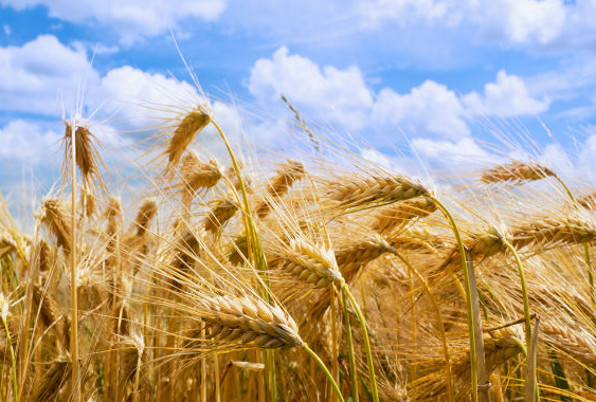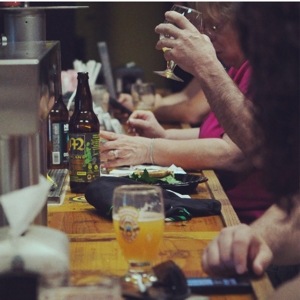Good Question. They are Food, after all, and all other Food products are compelled by law to include detailed nutrition and ingredient information on their package labels. Even Soft Drinks and Bottled Waters. So what earns Beer, Wine and Spirits an exemption from the regulations?
 Beer is traditionally made from just four ingredients: Malted Barley,
Beer is traditionally made from just four ingredients: Malted Barley,
Yeast, Hops and Water. But today’s mass produced Beers may
have less Barley and more of other, non-traditional
ingredients in them than you’d expect…
I’ll wax sarcastic for a moment to get it out of my system, and suggest that maybe governments don’t demand nutrition labelling on Alcoholic Beverages because they are convinced that nothing else in the brews could be more harmful to consumers than the Alcohol, itself. And it’s our choice to drink or not to drink. Or, to wax cynical, maybe the powers that be don’t want to discourage us from drinking Alcohol. After all, they rake in billions a year in Booze taxes. (Look how harmful smoking is, and then consider why governments have not yet outlawed this voracious killer. They rake in billions in Tobacco taxes every year. And the Canadian Government has mandated that recreational Cannabis is to be retailed here under the same sort of system – dumping more billions every year into the tax trough.)
We have good reason to want labelling
We all know too well, thanks to the continuing cavalcade of stories from the lab and clinic, about all the bad things Alcohol can do to a person. But there other aspects of Booze that should also interest us – if we had access to the ingredient list and nutritional information.
Nothing to base the weighty decisions on…
For instance – and this is a dimension of the Alcoholic Beverage ‘nutrition’ picture many of us are already aware of – all booze carries with it a heavy Caloric burden. Weightlossrecources.co.uk provides this comparison listing of the Caloric impacts of different types of Booze:
- 1 Large glass (8 oz. / 250ml) of average strength Red Wine = 214 Calories = one bag of Cheesy Wotsits or Potato Chips.
- 1 bottle of average strength Red Wine = 644 Calories = 1 McDonald’s Cheeseburger and Medium Fries.
- 1 large glass of medium dry White Wine = 190 Calories = 2.5 Digestive Biscuits.
- 1 bottle of medium dry White Wine = 570 Calories = 1 plate of Chicken with Cashew Nuts and Egg Fried Rice.
- 1 pint of premium Lager = 330 Calories = one 4 oz. / 113 g Fillet Mignon Steak
- 1 pint of Cider = 200 Calories = 1 KFC Chicken Drumstick
- 1 large Bailey’s (100 ml) = 320 Calories = 1 Snickers Bar
- 1 shot (1 oz. / 25 ml) of Vodka or Gin = 55 Calories = one 25ml serving of 35 % Cream
Now, even knowing the above, how do we interpret the caloric impact of ‘Light Beer’, or ‘Low Alcohol Beer’? Are they the same thing? No, but exactly what are they? That’s part of another post for another day…
What it my Booze made from?
Beer of all types is traditionally made from just 4 ingredients: Malted Barley, Hops, Water and Yeast. But today’s mass-produced Beers are riddled with a lot of other stuff, designed to make the brewing process faster, cheaper and more consistent. Barley? There may be a little in there just to pay lip service to the ancient traditions. But nowadays most beers contain a healthy dose of much cheaper Corn, Rice and/or Wheat as fermentation stock. Yes, that really does affect the flavour, character and colour of your brew. So brewmasters adjust the fermentation and aging process to compensate for the shortcomings of their economically attractive recipes. Thus is most mass-produced (inexpensive, ‘dishwater’) Beer made these days. We deserve to know what we’re drinking.
What about other inclusions in my tipple?
I, for one, would be interested to see how different spirits compare in their levels of fusel oils (alcohols other than ethyl that are byproducts of fermentation; the stuff that gives you hangovers) and other ‘contaminants’. And what about added colourings and flavourings that don’t naturally occur in the fermentation and aging process? Did my Whisky get that deep, warm amber glow from years of barrel aging? Or from a late-in-the-production-process shot of Caramel Food Colouring?
Wine poses even more quandries…
It’s fairly common knowledge, at least among oenophiles (wine aficionados) that winemakers blend wines from different years to achieve a consistent colour, flavour and acidity in their varietals. But did you know? And did you know that’s how they get rid of less-than-spectacular vintages that are not good enough to sell as premium varietals? Really good years are few and far between; that’s why vintage-year-labelled wines are so rare and expensive.
Did you know that official regulations (here in Canada, at least) allow vintners to blend cheap, bulk-imported wines from South America South Africa and elsewhere with their own vintages and sell them under non-varietal ‘brand’ names? And they don’t even have to tell you they’re doing that – though some (to their credit) do.
Did my bubbly get its bubbles the traditional way, through aging on the Yeast (méthode Champenoise)? Or did it get a shot of CO2 during bottling, like a can of Coke?
These are just some of the questions we could be asking…
And I firmly believe we should be asking them! Or, alternatively, have access to all the pertinent information on the products’ labels. It just makes sense…
~ Maggie J.

